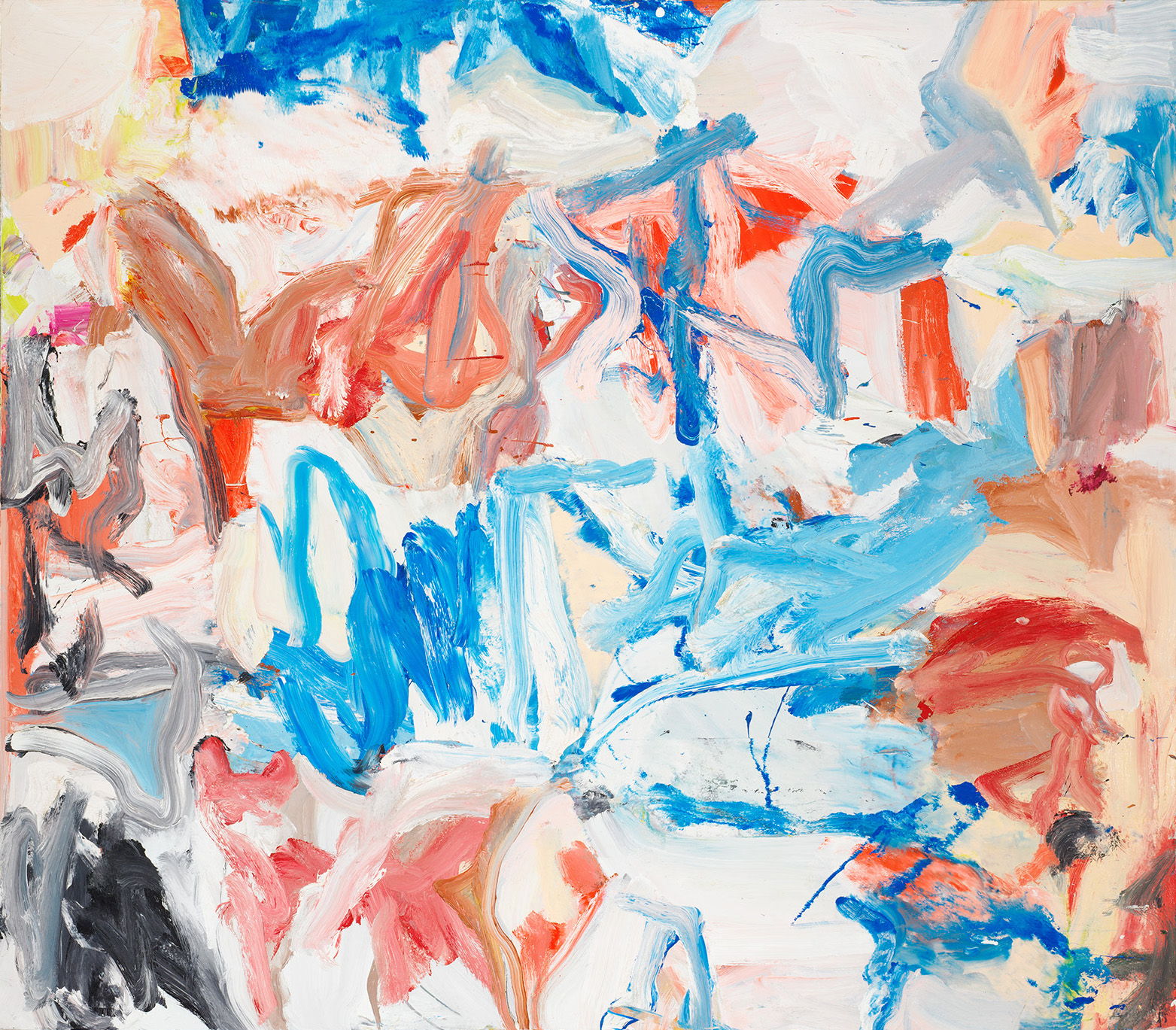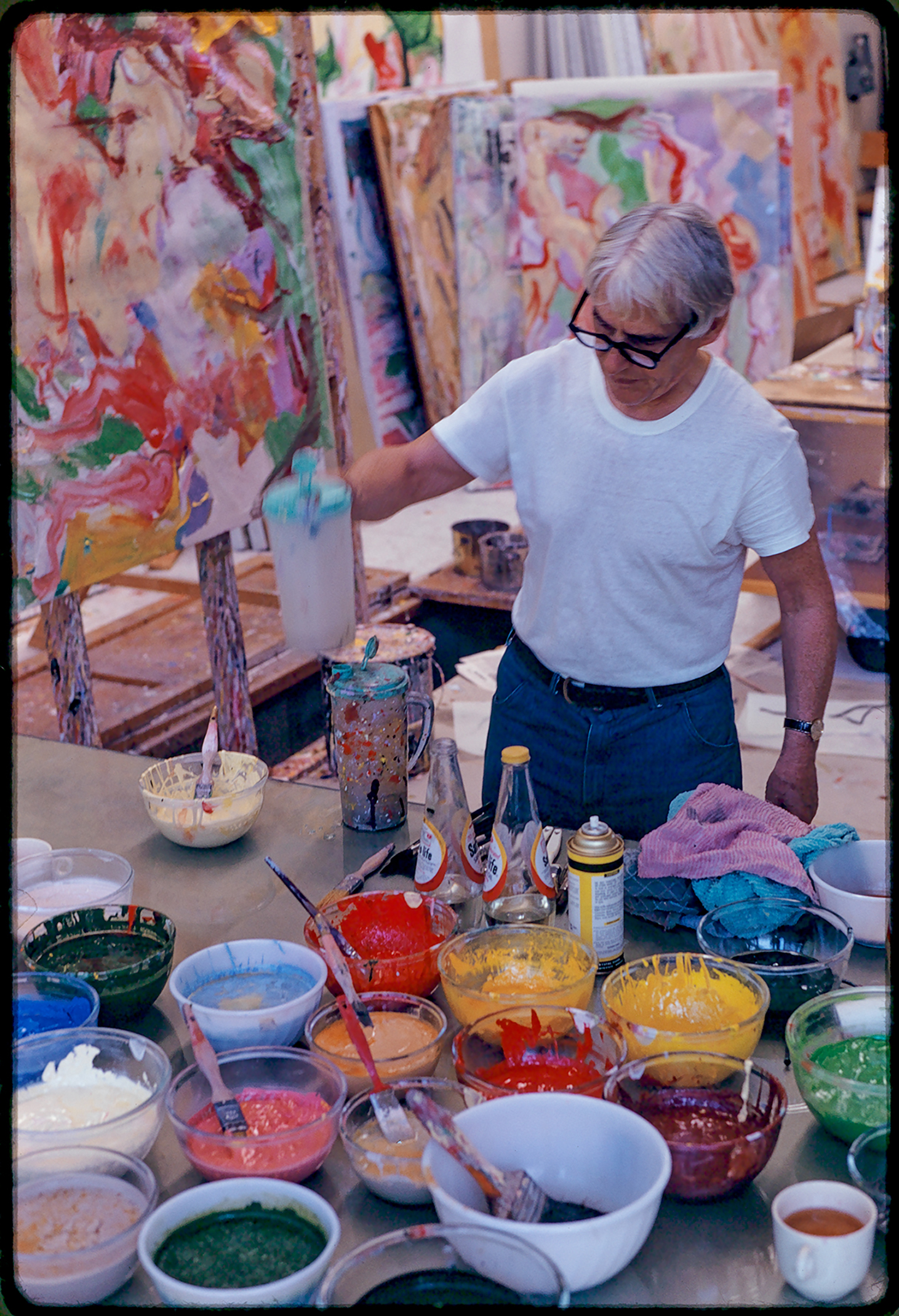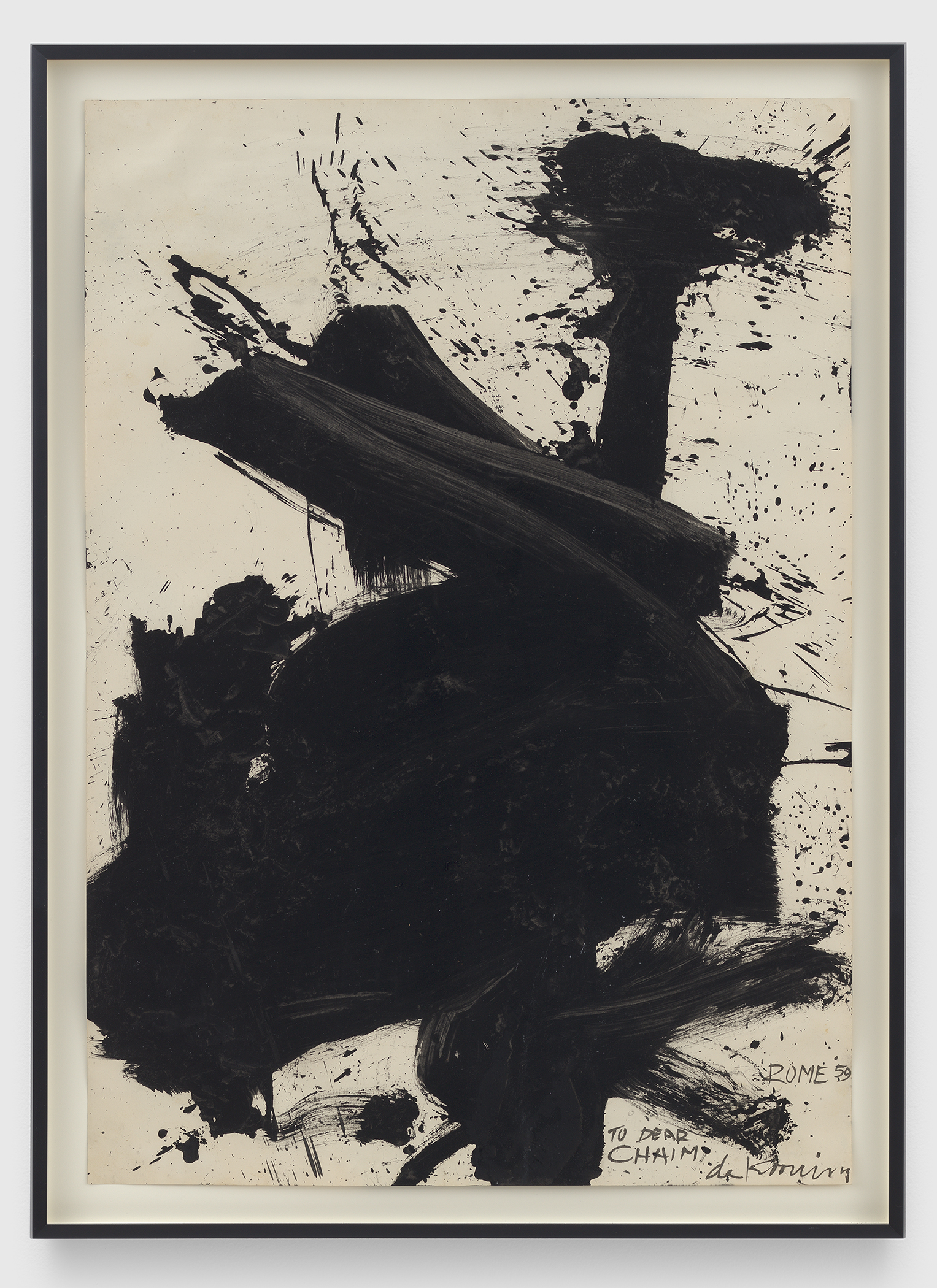
Willem de Kooning, Screams of Children Come from Seagulls (Untitled XX), 1975 olio su tela. 195.6 x 223.5 cm. Museo Glenstone Potomac, Maryland © 2024 The Willem de Kooning Foundation, SIAE
There are artists who shape their worldview and works through personal experiences and cultural influences. This is the case, for example, with Willem de Kooning, one of the great exponents of abstract expressionism, whose works and life tell stories of transformation and beauty.
Life and Works of Willem de Kooning

Willem de Kooning in his East Hampton Studio, New York, 1971 fotografia di Dan Budnik ©2024 The Estate of Dan Budnik. All Rights Reserved. Artwork © 2024 The Willem de Kooning Foundation, SIAE
Born in Rotterdam on April 24, 1904, de Kooning began his journey in art by attending the Academie van Beeldende Kunsten en Technische Wetenschappen in Rotterdam from 1916 to 1925. During these years, he worked in a furniture industry honing his skills and expanding his vision of art. His visits to Belgian museums in 1924 and subsequent studies in Brussels and Antwerp further enriched his artistic approach.
FROM EUROPE TO NEW YORK
In 1926, de Kooning crossed the ocean and headed to the United States, settling in New York City in 1927.
It was a city rich in opportunity and predisposed to innovation, which allowed de Kooning to meet key figures such as John Graham, Stuart Davis and Arshile Gorky.
These relationships were crucial to his artistic development, influencing him profoundly during his early years in New York, where he worked in various temporary jobs and produced commercial works until 1936.
His participation in the Federal Art Project, part of the Works Progress Administration, marked a turning point, allowing him to devote himself entirely to painting.
THE EVOLUTION OF DE KOONING’S STYLE
The 1930s were crucial for de Kooning, whose style began to show affinities with that of Graham and Gorky, reflecting the influence of masters such as Pablo Picasso and Joan Miró. It was during this period that he began his famous “Women” series, a theme he would explore for decades.
The 1940s saw her rise within the New York School, culminating in her first solo exhibition at Egan Gallery in 1948, where she exhibited abstract black-and-white works begun two years earlier.
RETURN TO THE ROOTS AND NEW EXPERIMENTATION
1968 marked a significant moment for de Kooning with a retrospective at the Stedelijk Museum in Amsterdam, his first return to Holland in forty years.
The following year, in Rome, he explored new artistic frontiers by creating his first clay sculptures, later cast in bronze. Willem de Kooning’s relationship with Italy was particularly important and significant, so much so that it allowed him to experiment with new techniques and modify his style.
This period of intense creativity continued into the 1970s with a series of life-size figures and several major exhibitions, including a show at the Solomon R. Guggenheim Museum in 1978.

Willem de Kooning, Untitled (Rome), 1959, inchiostro su carta. 101.6 x 76.2 cm. Fondazione Renee & Chaim Gross, New York © 2024 The Willem de Kooning Foundation, SIAE
THE LEGACY OF DE KOONING
Willem de Kooning continued to live and work until his death on March 19, 1997.
Willem de Kooning’s life and works remain a fundamental pillar of abstract expressionism, a testament to his ability to evolve and influence generations of artists. His creations not only marked an era but continue to influence the contemporary art scene.
Through his journey, de Kooning shows us how perseverance and innovation can transform not only the canvas, but the entire art world.

